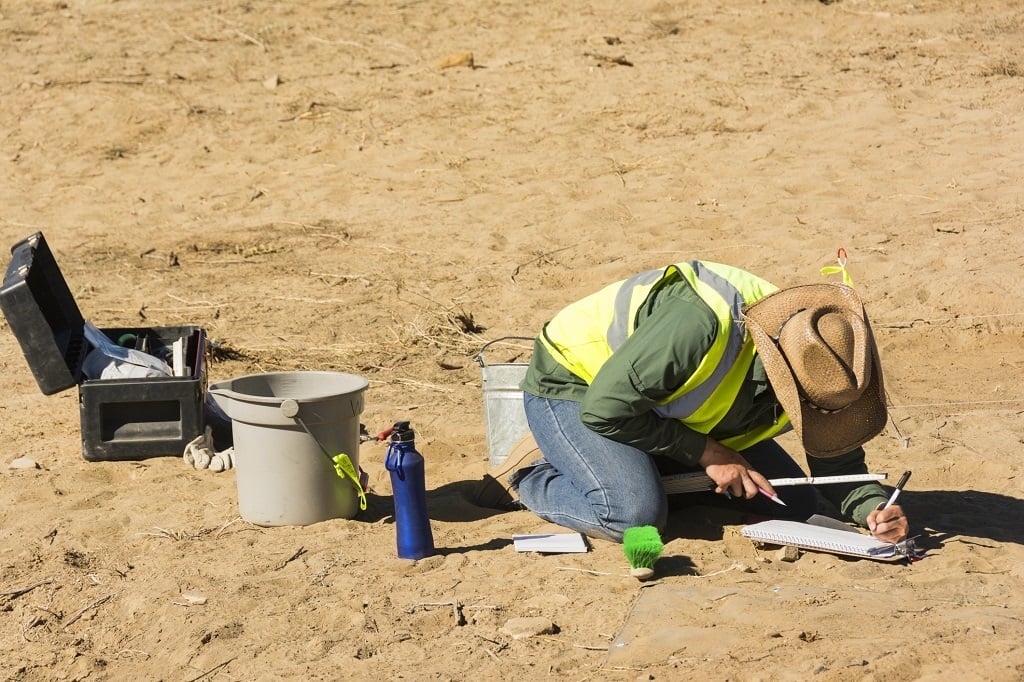
- Archaeologists have unearthed a wooden structure in Zambia, indicating that Stone Age communities used wood for construction.
- The log structure is believed to have formed part of a walkway or platform for those living along the Kalambo River some 500 000 years ago.
- Evidence on the logs indicates that they were cut, chopped and scraped using various stone tools found at the site.
- For climate change news and analysis, go to News24 Climate Future.
Archaeologists working in Zambia have made a revolutionary discovery that has the capacity to reshape our understanding of early hominid behaviour.
According to the Lusaka Times, scientists unearthed prehistoric wooden logs, firmly embedded in a riverbank, which indicate that nearly half a million years ago, Stone Age communities used wood for the construction of structures – possibly shelter.
"The research ... has generated significant excitement in the archaeological community. It is led by Professor Larry Barham from the University of Liverpool, who heads the Deep Roots of Humanity research project responsible for excavating and analysing this ancient timber," Lusaka Times wrote.
Found at Kalambo Falls in the north of Zambia, near the border with Tanzania, the "exceptionally preserved" wooden structure was made by shaping two logs with sharp stone tools. The structure is believed to have formed part of a walkway or platform for human ancestors who lived along the Kalambo River some 500 000 years ago.
READ | Extreme heat uncovers lost villages, ancient ruins and shipwrecks
According to the research published in the journal Nature, evidence on the logs indicates that they were cut, chopped and scraped using various stone tools found at the site. Of note, one log, identified as a species of bushwillow, rests atop another and is secured by a large, inverted U-shaped notch carved into its underside, according to the journal's report.
"It makes the two logs fit together to become structural objects," said Geoff Duller, professor of geography at the University of Aberystwyth in Wales and a member of the team via the BBC.
Further analysis and findings, also published in Nature, put the logs at about 476 000 years old.
Barham, who is also the study's lead author, said that, to his knowledge, the previous record-holder for the oldest wooden structure was 9 000 years old.
The chance discovery was made in 2019 while archaeologists were excavating a site located on the banks of the Kalambo River above a 234-meter waterfall, the second-highest single-drop waterfall in Africa.
In addition to its breathtaking views, Kalambo Falls holds significant archaeological importance, with the earliest evidence of human occupation dating back hundreds of thousands of years and continuing to the present day. This enduring history makes Kalambo Falls one of the longest continuously inhabited areas in the world.
Barham and his team arrived at Kalambo Falls in 2019 hoping to press on with excavations made in 2006, only to find that the river had shifted course and flooded the area.
The next plan of action involved going to a strip of beach on the Kalambo River upstream. There they found the first of the wooden items recovered on the trip, a digging stick dated to about 390 000 years ago. Further digging uncovered the wooden structure that is a testament to the ingenuity and skill of our hominin ancestors.
"They made something new, and large, from wood," Barham said.
"They used their intelligence, imagination and skills to create something they'd never seen before, something that had never previously existed," the Lusaka Times reported him as saying.
READ | PICS | Archaeologists' Kruger National Park discovery reveals glimpse of historic predecessors
This discovery is leading scientists worldwide to rethink the widely held notion that our hominin ancestors led simple, nomadic lives.
What makes this discovery even more remarkable is that wood rots unless it is preserved in specific conditions. Barham and his team believe that the permanently high water table at the site preserved the wood. Clay sediments surrounding it provided an oxygen-free environment, preventing decay for nearly half a million years.
To credibly determine the age of the structure, the team used luminescence dating, which determines age by measuring the last time minerals were exposed to sunlight.
"The discovery of the wooden structure changed how I thought about these people", Barham said, according to Nature.
"They used their intelligence, imagination and skills to create something they'd never seen before, something that had never previously existed.
"This suggests an abstract level of thinking and probably language," he added.
The use of wood to create structures does not come across as a complete surprise to academics such as Shadreck Chirikure, a professor of archaeological science at the University of Oxford who was not involved in the study.
"It is unthinkable that hominins would not use wood, given its widespread nature," he said.
Although no bones have been found at the site so far, Barham suspects that the artefacts were made by Homo heidelbergensis, known from about 700 000 to 200 000 years ago.
"The finds from Kalambo Falls indicate that these hominins, like Homo sapiens, had the capacity to alter their surroundings, creating a built environment," Barham said, according to Reuters.
"Use of wood in this way suggests that cognitive ability to these early humans was greater than we have believed based on stone tools alone," he added.
READ | INSIGHT | Africa's heritage sites in peril as planet heats up
Perrice Nkombwe, a team member and director of Zambia's Livingstone Museum, said she was amazed at the discovery.
"It dawned on me that we had uncovered something extraordinary," she told the BBC.
Nkombwe hopes the discovery will be used to enrich the country's existing archaeological collection.
The wooden structure will initially be transported to the UK for analysis and preservation. The pieces will be stored in tanks that mimic the waterlogging that preserved them so well for the last half a million years. They will then return to Zambia to be displayed.




 Publications
Publications
 Partners
Partners












